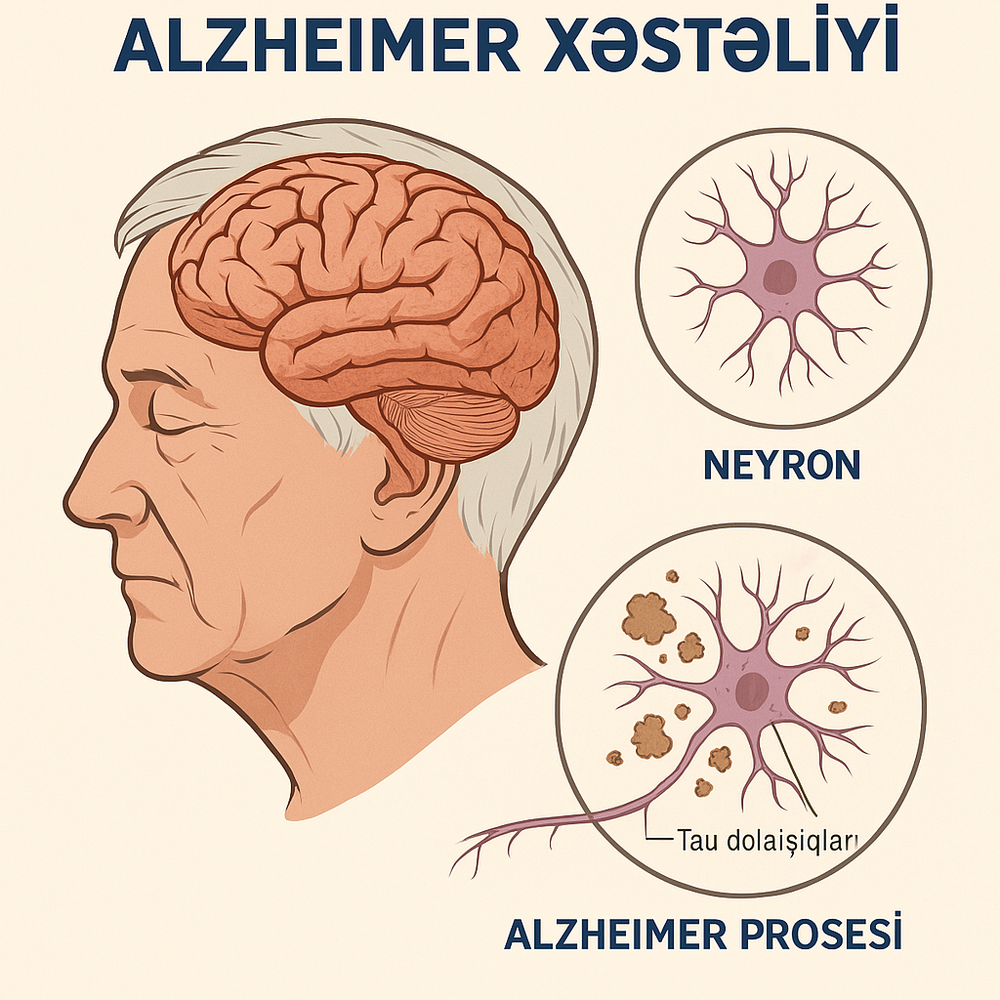INTRODUCTION
One of the major global health challenges of the 21st century is Alzheimer’s disease — the most common form of dementia. This neurodegenerative disorder gradually causes millions of people to lose their memory, thinking ability, and capacity for daily functioning. While not an inevitable part of aging, it is one of the most serious age-related illnesses. Identifying the early signs of Alzheimer’s is crucial for slowing its progression.
1. NATURE AND STRUCTURE OF THE DISEASE
Alzheimer’s disease is a chronic and progressive condition characterized by the gradual death of brain cells. It typically begins in the hippocampus — the center for memory — and over time spreads to other regions of the brain. This leads to memory loss, impaired decision-making, language difficulties, and emotional changes.
Pathologically, Alzheimer’s is associated with the accumulation of two key proteins in the brain: beta-amyloid plaques and tau tangles. These proteins disrupt communication between neurons, cause cell death, and lead to brain shrinkage.
2. THE BEGINNING OF ALZHEIMER’S: A SILENT BUILD-UP
Alzheimer’s disease often develops quietly over many years. This stage is known as preclinical Alzheimer’s, when no visible symptoms are present, but pathological changes are already underway. Accumulation of beta-amyloid and tau proteins begins during this phase. Unfortunately, it can only be detected through PET scans or cerebrospinal fluid analysis.
3. EARLY SIGNS: HIDDEN SIGNALS
The initial symptoms of Alzheimer’s are usually subtle and easily mistaken for normal aging. However, identifying them in time allows for early diagnosis and intervention.
3.1. Memory Loss
The most common early symptom is forgetting newly acquired information. For instance, a person may struggle to remember a recently introduced name or a recent event. Forgetting important dates, frequently repeating questions, or increasingly relying on notes and reminders are key signs.
3.2. Difficulty Making Decisions
Tasks that were once simple, like managing finances, shopping, or following a recipe, may become difficult and require more effort.
3.3. Confusion About Time and Place
Patients may forget the day, where they are, or how they got there. Disorientation in time and space becomes frequent and may pose safety risks.
3.4. Language and Speech Problems
Struggling to find the right words, constructing sentences incorrectly, or repeating phrases are early symptoms. Sometimes the person forgets the name of everyday items and tries to describe them instead.
3.5. Mood and Personality Changes
Depression, anxiety, unexplained irritability, social withdrawal, or even aggression can appear early. A loss of self-confidence often leads to changes in social behavior.
4. SOCIAL AND PSYCHOLOGICAL IMPACT
Alzheimer’s affects more than just physical health — it deeply impacts emotional and social well-being. Patients may start to withdraw from social life. Relationships with friends and family become strained. The weakening of social bonds affects both the patient and their loved ones.
Sadly, many people attribute these signs to normal aging and delay seeking help. Yet early psychological and social support can significantly improve a patient’s quality of life.
5. RISK FACTORS
Several factors contribute to the development of Alzheimer’s:
-
Age – Risk increases significantly after age 65
-
Genetic predisposition – Especially in carriers of the APOE-e4 gene
-
Family history – Risk is higher if close relatives had Alzheimer’s
-
Head trauma – Past brain injuries may be a contributing factor
-
Cardiovascular issues – High blood pressure, diabetes, and high cholesterol
-
Sedentary lifestyle and social isolation
6. IMPORTANCE OF EARLY DIAGNOSIS
Early diagnosis is a strategic advantage for both patients and their families. Timely treatment, lifestyle changes, and support can slow the disease’s progression. Individuals diagnosed at an early stage can still participate in decision-making and life planning.
Modern diagnostic tools — such as MRI, PET scans, neuropsychological testing, and genetic screening — are essential for detecting the disease early.
7. TREATMENT METHODS AND LIFESTYLE CHANGES
There is currently no cure for Alzheimer’s. However, some medications can help manage symptoms (e.g., Donepezil, Rivastigmine). Complementary approaches are also beneficial:
-
Physical activity – Regular exercise supports brain health
-
Mental stimulation – Reading, puzzles, learning new skills
-
Social engagement – Staying socially active helps slow decline
-
Sleep and diet – A Mediterranean-style diet rich in omega-3s and antioxidants is recommended
8. THE ROLE OF SOCIETY AND SUPPORT SYSTEMS
Helping people with Alzheimer’s live better lives requires responsibility from families, healthcare systems, and society as a whole. Initiatives like social integration programs, adult day centers, support groups, and public awareness campaigns are vital.
Above all, public education about the disease — reducing stigma, promoting early diagnosis, and strengthening caregiver support — is essential.
CONCLUSION
Alzheimer’s disease is not just a personal issue — it is a societal challenge. Recognizing early symptoms, taking timely action, and providing public support are the keys to success. As science advances, more effective treatments will emerge. But for now, our strongest tools are knowledge, awareness, and compassion.

